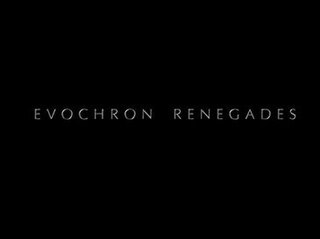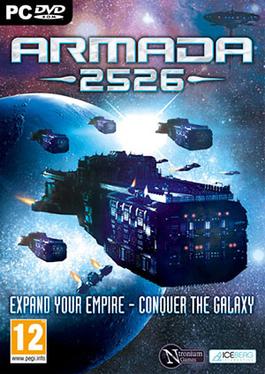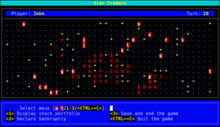
Freeciv is a single- and multiplayer turn-based strategy game for workstations and personal computers inspired by the proprietary Sid Meier's Civilization series. It is available for most desktop computer operating systems and available in an online browser version. Released under the GNU GPL-2.0-or-later, Freeciv is free and open-source software. The game's default settings are closest to Civilization II, in both gameplay and graphics, including the units and the isometric grid. However, with a lot of multiplayer games being played in longturn communities, rulesets and additional variants have evolved away from the original ruleset. Freeciv is playable online at Longturn.net, fciv.net, freecivweb.org and some temporary private servers.

WordStar is a word processor application for microcomputers. It was published by MicroPro International and originally written for the CP/M-80 operating system, with later editions added for MS-DOS and other 16-bit PC OSes. Rob Barnaby was the sole author of the early versions of the program.

Zilog, Inc. is an American manufacturer of microprocessors and 8-bit and 16-bit microcontrollers. It is also a supplier of application-specific embedded system-on-chip (SoC) products.
A computing platform, digital platform, or software platform is an environment in which software is executed. It may be the hardware or the operating system (OS), a web browser and associated application programming interfaces, or other underlying software, as long as the program code is executed using the services provided by the platform. Computing platforms have different abstraction levels, including a computer architecture, an OS, or runtime libraries. A computing platform is the stage on which computer programs can run.

M.U.L.E. is a 1983 multiplayer video game written for the Atari 8-bit family of home computers by Ozark Softscape. Designer Danielle Bunten Berry took advantage of the four joystick ports of the Atari 400 and 800 to allow four-player simultaneous play. M.U.L.E. was one of the first five games published in 1983 by new company Electronic Arts, alongside Axis Assassin, Archon: The Light and the Dark, Worms?, and Hard Hat Mack. Primarily a turn-based strategy game, it incorporates real-time elements where players compete directly as well as aspects that simulate economics.

Elite is a space trading video game. It was written and developed by David Braben and Ian Bell and originally published by Acornsoft for the BBC Micro and Acorn Electron computers in September 1984. Elite's open-ended game model, and revolutionary 3D graphics led to it being ported to virtually every contemporary home computer system and earned it a place as a classic and a genre maker in gaming history. The game's title derives from one of the player's goals of raising their combat rating to the exalted heights of "Elite".

Stars! is a turn-based strategy, science fiction 4X video game, originally developed by Jeff Johnson and Jeff McBride with help from Jeffrey Krauss for personal use, initially released as shareware for Microsoft Windows in 1995. A retail version was later produced for, and published by Empire Interactive, with developer Jason Gaston added to the team for quality assurance testing, although the shareware version continued.
Trade Wars is a series of video games dating back to 1984. The video games are inspired by Hunt the Wumpus, the board game Risk, and the original space trader game Star Trader.

Freelancer is a space trading and combat simulation video game developed by Digital Anvil and published by Microsoft Game Studios. It is a chronological sequel to Digital Anvil's Starlancer, a combat flight simulator released in 2000. The game was initially announced by Chris Roberts in 1999, and following many production schedule mishaps and a buyout of Digital Anvil by Microsoft, it was eventually released in March 2003.

Star Trek is a text-based strategy video game based on the Star Trek television series (1966–69) and originally released in 1971. In the game, the player commands the USS Enterprise on a mission to hunt down and destroy an invading fleet of Klingon warships. The player travels through the 64 quadrants of the galaxy to attack enemy ships with phasers and photon torpedoes in turn-based battles and refuel at starbases. The goal is to eliminate all enemies within a random time limit.
VGA Planets is a multi-player space strategy war game originally released in 1992. The game simulates combat in space between galactic scale empires. It follows the 4X game model: The players start with a home world, and have to build spaceships, explore the galaxy, colonize planets, mine minerals, build up their industry.

Evochron Renegades is a freeform videogame that forms the 2007 installment in the indie StarWraith 3D Games series of space simulation games. It is the sequel to Evochron: Alliance 2.0. Evochron Renegades features a vast and seamless universe that lets the player fly anywhere, without loading screens or choppy environment flipping. The game is especially notable for being the successful product of a one-man development studio.

The history of the personal computer as a mass-market consumer electronic device began with the microcomputer revolution of the 1970s. A personal computer is one intended for interactive individual use, as opposed to a mainframe computer where the end user's requests are filtered through operating staff, or a time-sharing system in which one large processor is shared by many individuals. After the development of the microprocessor, individual personal computers were low enough in cost that they eventually became affordable consumer goods. Early personal computers – generally called microcomputers – were sold often in electronic kit form and in limited numbers, and were of interest mostly to hobbyists and technicians.
Cromemco was a Mountain View, California microcomputer company known for its high-end Z80-based S-100 bus computers and peripherals in the early days of the personal computer revolution.

The British Broadcasting Corporation Microcomputer System, or BBC Micro, is a series of microcomputer designed and built by Acorn Computers Limited in the 1980s for the Computer Literacy Project of the BBC. Designed with an emphasis on education, it was notable for its ruggedness, expandability, and the quality of its operating system. An accompanying 1982 television series, The Computer Programme, featuring Chris Serle learning to use the machine, was broadcast on BBC2.

A command-line interface (CLI) is a means of interacting with a computer program by inputting lines of text called command-lines. Command-line interfaces emerged in the mid-1960s, on computer terminals, as an interactive and more user-friendly alternative to the non-interactive interface available with punched cards.

Armada 2526 is a 4X science fiction computer strategy game developed by British studio Ntronium Games, released in North America on November 17, 2009. Armada 2526 is an example of the space opera genre, and is the spiritual successor of the game Armada 2525, which was released by Interstel in 1991. Armada 2526 puts players in charge of a fledgling galactic empire, and they must attempt to explore the galaxy and expand their territory, while trying to destroy rival empires. The gameplay is a hybrid of turn-based and real-time time-keeping systems, and players can use military, diplomatic, economic and technological means to further their empires. The game received mixed reviews from critics.
Mainframe computers are computers used primarily by businesses and academic institutions for large-scale processes. Before personal computers, first termed microcomputers, became widely available to the general public in the 1970s, the computing industry was composed of mainframe computers and the relatively smaller and cheaper minicomputer variant. During the mid to late 1960s, many early video games were programmed on these computers. Developed prior to the rise of the commercial video game industry in the early 1970s, these early mainframe games were generally written by students or employees at large corporations in a machine or assembly language that could only be understood by the specific machine or computer type they were developed on. While many of these games were lost as older computers were discontinued, some of them were ported to high-level computer languages like BASIC, had expanded versions later released for personal computers, or were recreated for bulletin board systems years later, thus influencing future games and developers.














